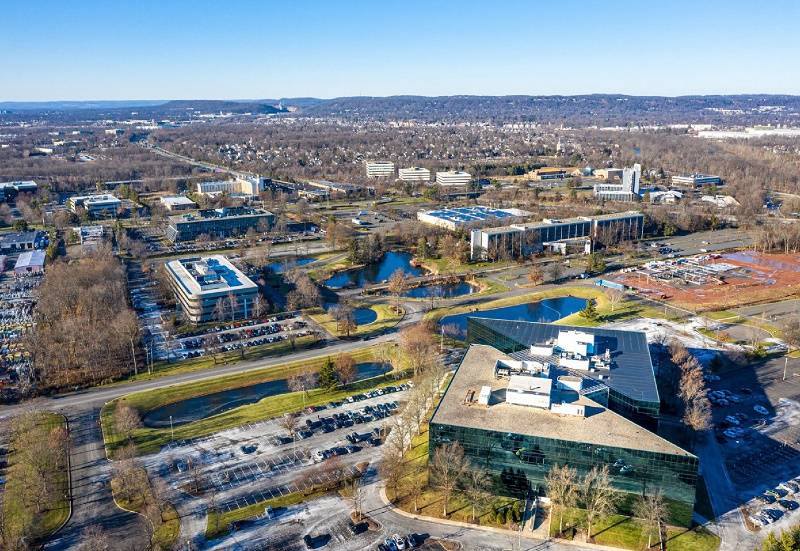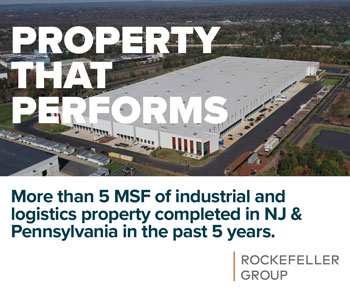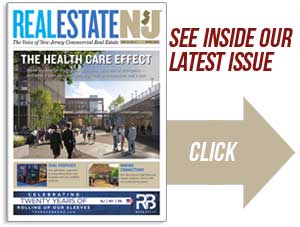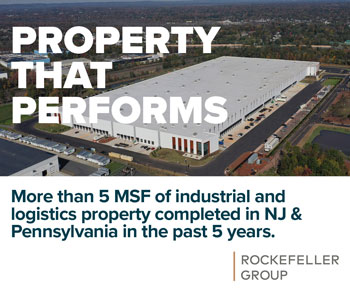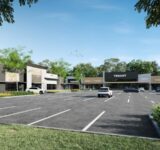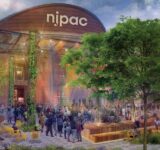A joint venture of EverWest Real Estate Investors and Woodmont Properties recently purchased 400 and 600 Atrium Drive in Franklin, the site of a 351,782-square-foot office building and an adjacent parcel in the township’s Somerset section. They now plan to vacate and raze the existing structure to make way for a two-building, 426,000-square-foot industrial campus, in one of several adaptive reuse projects slated to bring new warehouse and logistics space to the municipality. — Courtesy: EverWest
By Joshua Burd
For a municipality that prides itself on being proactive, Franklin Township did exactly that around 2017, when it ordered a land use study that, among other findings, highlighted the glut of aging office space within its 500-acre corporate business district.
All the while, industrial developers had started to venture north on Interstate 287 in search of new sites, creating a compelling opportunity if local officials were willing to seize it.
“We saw what the market was doing,” said Vincent Dominach, Franklin’s economic development director and business advocate. The township was already fielding inquiries about which properties could be developed as warehouse space, he said, as office vacancy grew with little sign of slowing down. That made it all the more evident that the governing body needed to take action in line with the recent economic development study.
“They were convinced that, yes, we needed to make the change — and we did,” Dominach said, pointing to a key zoning change in late 2020 that opened the door for new industrial projects.
Those steps are now bearing fruit for the community of roughly 62,000, which has long benefited from its access to I-287 and other major highways. According to Dominach, Franklin has more than 4 million square feet of industrial space in its development pipeline — most of it in the town’s well-known Somerset section — with a growing list of projects that call for razing and repurposing the sites of outdated office buildings.
That has quickly made it a destination for builders, investors and tenants in the state’s booming industrial sector.

“The feeling in the market, in Somerset, is that they’re friendly to developers, friendly to business,” said Elli Klapper, an investment sales broker and senior vice president with CBRE. “And developers feel comfortable buying properties knowing that, if they go to the town and they give a reasonable plan that fits all the town’s needs, the town is going to approve it.
“So it’s really become a place where many developers want to be and they’ve been calling us off the hook to be there.”
That’s evident by several recent deals brokered by CBRE, including a joint venture’s recent purchase of a 351,782-square-foot office building and an adjacent parcel at 400 and 600 Atrium Drive in Somerset. The buyers, EverWest Real Estate Investors and Woodmont Properties, now plan to vacate and raze the existing structure to make way for a two-building, 426,000-square-foot industrial campus.
“

Somerset is one of the fastest-growing industrial submarkets in the New Jersey market, with limited existing availability, modest new speculative construction and a growing list of major users and investors turning their interest toward the area,” Stephen Feinberg, EverWest’s director of Northeast acquisitions, said in mid-September after announcing the deal. “This project will make the most of those fundamentals, capitalizing on a location that provides immediate access to I-287 while leveraging the area’s excellent labor pool.”
At the time, EverWest noted that industrial rents in Somerset had skyrocketed from below $4 per square foot in 2013 to almost $12 per square foot, citing data from CoStar. Submarket industrial vacancy at that point was roughly 4 percent.
CBRE’s Klapper, Mark Silverman and Charles Berger arranged the nearly $43 million transaction alongside industrial broker Kevin Dudley. More recently, the team inked the nearly $31 million sale of a 35-year-old, 209,000-square-foot office building at 200 Cottontail Lane, which an undisclosed buyer now plans to redevelop as logistics space.
The redevelopment boom is not a moment too soon for Franklin, a town that has been burdened by millions of square feet of outmoded, largely vacant office space, much of it built in a time of soaring demand for suburban corporate campuses. A report by JLL found that overall office vacancy in the Lower 287 submarket, which includes Franklin and parts of northern Middlesex County, was 26.3 percent at the end of 2019, equating to more than 2.3 million square feet of direct and sublet space at the time.
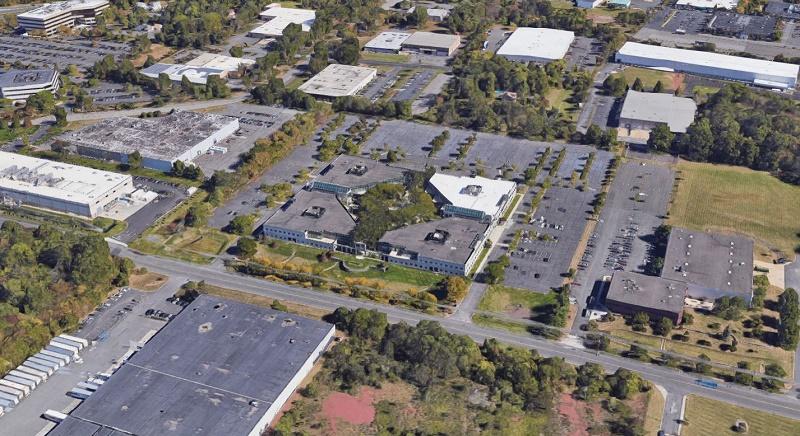
“Those office buildings are never in our lifetime going to be occupied again,” Dominach said of the Franklin properties, which are clustered along Davidson Avenue, Atrium Drive and other streets near I-287. He added that the municipality has increasingly grappled with property tax appeals from the buildings’ owners, which take several years to resolve, leaving it on the hook for “considerable sums” once a settlement is reached.
The office space “served its purpose for a couple of decades,” Dominach said, but had fallen out of favor by the time local officials commissioned a study on its corporate business district. The ensuing report released in 2017 offered several key recommendations, including the creation of a single “business and industry zone” that would permit both industrial and office development across the entire area. Previously, the 502-acre district consisted of three zones that segregated the uses, Dominach said, but creating a single land use policy would support the redevelopment of Franklin’s underutilized office stock.
The township council ultimately did so in late 2020, with its case only strengthened by the pandemic and the massive shift toward remote work. By that point, he added, the municipality had already granted use variances for developers seeking to build warehouse space in what was previously the office zone.
“That was the moment we made it official,” Dominach said. “We had been talking about making that change for several years, but like anything else, you have to time everything correctly, because there’s always movements out there for development and against development — and we wanted to make sure it was done at the appropriate time.”
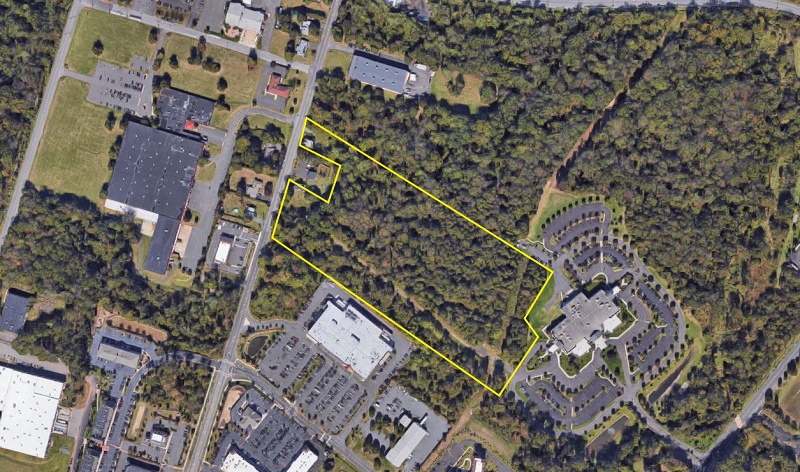
The decision has sparked interest from a host of top developers that have sought to repurpose not just office buildings, but other property types along I-287. They include Link Logistics, the Blackstone affiliate, which is now building 355,790 square feet of industrial space at the former site of a John Wiley & Sons warehouse at 1 Wiley Drive.
Meantime, Brookfield Properties is marketing around 200,000 square feet that it’s developing at 17 School House Road, the former site of the 90,000-square-foot New Jersey Chinese Community Center building.

“If it’s got the right zoning, it doesn’t seem to matter what’s on the site,” said Silverman, a vice president of investment properties with CBRE. “Someone will make an attempt to try to reposition it.”
Not that it’s always easy to do so. Silverman noted that, even in office buildings with high vacancy, there are still tenants with leases and lease options in place, so negotiating a buyout and convincing them to relocate can be complicated, challenging and time-consuming.
“The one thing developers are usually not going to take on is tenant risk,” he said.
That said, the pandemic has made tenants more willing to consider downsizing.
“Most offices aren’t at full capacity or they’re using their space differently than they did before,” Klapper said. “So when most office tenants were asked this question, they said ‘Yeah, we actually would like to leave. If you could move me into a space … that fits my needs today versus my needs when I signed this lease, we’d be happy to move.’ ”
He called it “a perfect storm” for redeveloping office buildings in Franklin, with the town’s proactive approach to zoning, the surging industrial market and the evolving use of office space.
The development pipeline is also benefiting from what Dominach says is a relative lack of pushback from residents. A main reason, he said, is that much of the town’s business and industry zone is well-separated from its residential neighborhoods. That’s especially true along Davidson Avenue and neighboring streets that are home to large office buildings.
As for whether the town will ultimately look to limit the number of buildings that are torn down in the name of redevelopment, Dominach said “that’s up to the market.”
“It’s zoned to permit warehousing and office building, so the office buildings that are successful I would expect to remain,” he said. “The market pressure dictates everything.”

